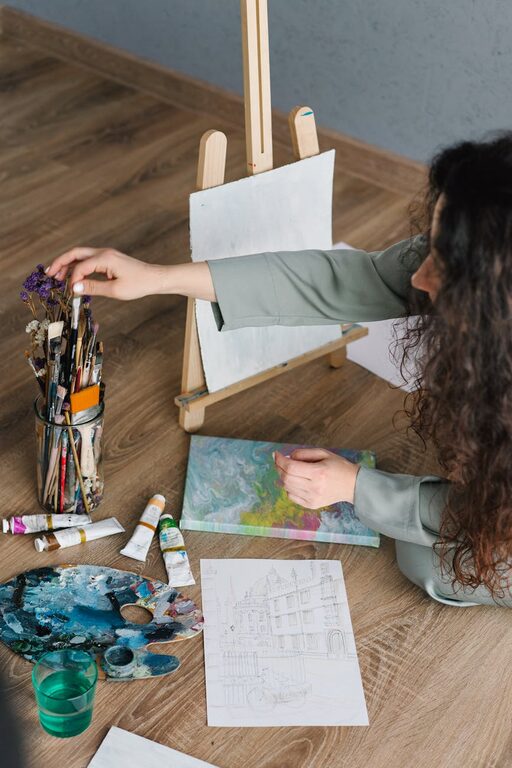Creativity is not just for artists, writers, or musicians—it’s a skill everyone can nurture and develop. Whether you want to find new solutions at work, express yourself through art, or simply add more joy to your life, practicing creativity daily can help you grow and stay inspired. The good news is that creativity doesn’t require grand gestures or complicated routines. With small, consistent habits, you can easily incorporate creativity into your everyday life.
In this post, we’ll explore simple, enjoyable ways to boost your creative energy every day. Let’s dive in!
Why Practice Creativity Every Day?
Creativity is like a muscle—the more you use it, the stronger it becomes. Regular creative practice can help you:
– Solve problems in innovative ways
– Reduce stress and increase happiness
– Improve mental flexibility and confidence
– Enhance your ability to communicate and connect
By dedicating a little time each day, you can enhance your creative thinking, no matter your background or interests.
1. Keep a Creativity Journal
One of the easiest ways to foster creativity is by keeping a journal. This doesn’t have to be a detailed diary—just a place where you jot down ideas, doodles, observations, or anything that sparks your curiosity.
How to start:
– Dedicate a notebook or digital app just for creative notes.
– Write down one new idea or observation each day.
– Sketch a quick image or mind map.
– Reflect on a problem and brainstorm different possible solutions.
Over time, your creativity journal becomes a treasure trove of inspiration, and reviewing old entries often sparks fresh ideas.
2. Try a Daily Creative Challenge
Challenges provide structure and motivation. Consider setting small daily challenges that push you slightly outside your comfort zone creatively.
Challenge ideas:
– Write one sentence or paragraph each day.
– Take a photo of something interesting.
– Sketch an object nearby in 5 minutes.
– Create a new recipe using limited ingredients.
– Compose a short poem or haiku.
These activities don’t require hours—just 5 to 15 minutes per day—and help build a habit of creative thinking.
3. Explore New Perspectives
Creativity often comes from seeing the world differently. To encourage this mindset:
– Take a different route when walking or driving.
– Observe something familiar in detail, like a plant or building.
– Ask “what if” questions about common situations.
– Imagine how someone else would solve your problem.
By breaking your routine and considering alternate viewpoints, you’ll keep your mind flexible and open to new ideas.
4. Embrace Play and Experimentation
Play isn’t just for kids—it’s a powerful way to unlock creativity. When you approach tasks with curiosity and a playful attitude, you reduce fear of failure and open yourself to experimentation.
Ways to play creatively:
– Mix and match colors, materials, or concepts just for fun.
– Pretend you’re creating for a different age or culture.
– Use unusual tools or mediums for an activity (e.g., painting with kitchen utensils).
– Engage in improvisation—whether it’s writing, music, or conversation.
Allowing yourself room to make mistakes or go off-script often leads to unexpected and exciting results.
5. Limit Distractions and Create a Creative Space
A cluttered, noisy environment can hinder creative flow. Setting aside a specific space and time for creative activities can help you focus and get into a productive mindset.
Tips to create a creative space:
– Choose a spot with natural light and minimal distractions.
– Keep your tools (notebooks, art supplies, instruments) organized and ready.
– Play your favorite background music or ambient sounds if it helps you focus.
– Set a timer for short, focused creative sessions.
Even a corner of a room can become your “creativity zone” with a little planning.
6. Collaborate and Share Ideas
Creativity thrives in connection. Sharing your ideas with others and collaborating can provide new insights, feedback, and motivation.
– Join creative groups or forums online.
– Participate in workshops or meetups.
– Share your work or ideas with trusted friends or family.
– Brainstorm together on a project or challenge.
Different perspectives can spark inspiration and help you see solutions or possibilities you might miss alone.
7. Make Time for Rest and Reflection
Creativity isn’t just about doing—it’s also about reflection and letting your mind wander. Sometimes the best ideas come when you’re relaxed.
– Take breaks during creative work to recharge.
– Practice mindfulness, meditation, or simply enjoy nature.
– Reflect on your creative progress weekly or monthly.
– Celebrate small wins and lessons learned.
Rest helps your brain make new connections and approach problems with renewed energy.
Conclusion
Incorporating creativity into your daily routine doesn’t have to feel overwhelming. By adopting simple habits like journaling, trying daily challenges, exploring new perspectives, and embracing play, you gradually build your creative muscles. Remember that creativity is personal and flexible—what matters most is finding joy in the process and staying curious.
Start small, be consistent, and enjoy the journey of making creativity a natural part of your everyday life. You might be surprised how unlocked creative potential can enrich many areas of your life!
—
What are some of your favorite ways to practice creativity? Share your ideas in the comments below!

